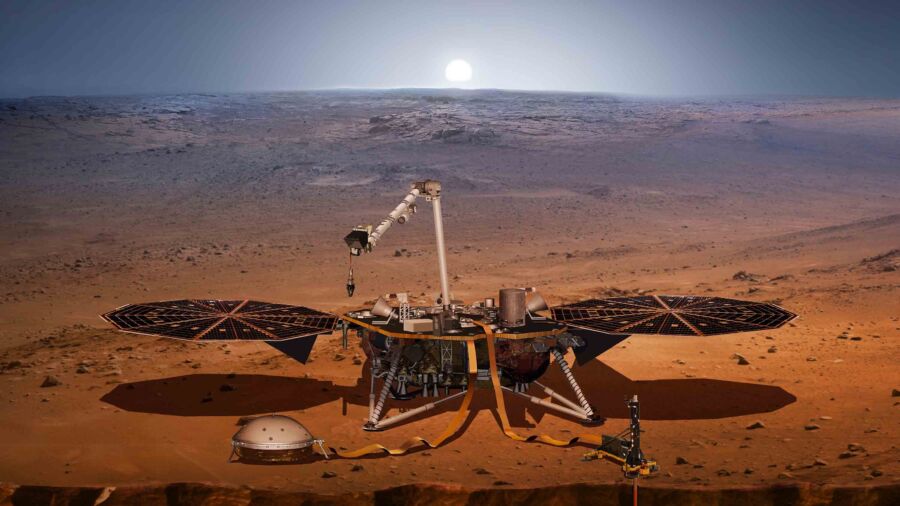Mars is rotating more quickly than it used to, according to data that NASA’s InSight lander collected on the red planet.
The now-retired InSight was armed with a suite of instruments, including antennae and a radio transponder called RISE, or the Rotation and Interior Structure Experiment. The instruments were used to track Mars’ rotation during the mission’s first 900 days on the planet.
Astronomers determined that the planet’s spin is increasing by about 4 milliarcseconds per year², or shortening the length of a Martian day by a fraction of a millisecond per year. A Martian day lasts about 40 minutes longer than a day on Earth.
The increased acceleration seems incredibly small, and researchers aren’t quite sure what is causing it. However, they suggest it might be due to ice accumulation at the Martian poles or the rise of landmasses after being covered in ice. When a planet’s mass shifts in this way, it can cause the planet’s spin to accelerate.
The findings, based on an analysis of InSight data shared before the mission ran out of power and retired, were reported in a June study published in the journal Nature.
Initially, the InSight mission, the first to study the interior of Mars, was supposed to last about two years after it landed in November 2018. But NASA extended the mission for another two years.
The InSight mission continued to collect data about Mars until the very end, falling silent in December 2022 after dust blocked its solar panels from receiving sunlight.
InSight benefited from relying on advances in radio technology that were a vast improvement on what the Viking landers in the 1970s and Pathfinder in the 1990s carried. Upgrades to the Deep Space Network, or the massive antennas placed at three strategic points on Earth that relay info from space missions, also enhanced the accuracy of the data captured by InSight and sent back to Earth.
Scientists used the Deep Space Network to beam signals to RISE on InSight, which then reflected the signal back to Earth. These relayed signals helped researchers track small frequency changes caused by the Doppler shift, which is what causes sirens to change in pitch depending on their distance. The frequency changes correlated with the planet’s rotation.
“What we’re looking for are variations that are just a few tens of centimeters over the course of a Martian year,” said lead study author Sebastien Le Maistre, RISE’s principal investigator at the Royal Observatory of Belgium, in a statement. “It takes a very long time and a lot of data to accumulate before we can even see these variations.”

Measuring Mars’ Wobble
Previous research made possible by the mission’s unique detections of the planet’s interior confirmed that Mars has a molten metal core. Researchers then used RISE to measure the wobble of Mars as the core sloshes around inside it.
Tracking Mars’ wobble, or nutation, enabled the team to measure the size of the core.
The RISE data suggested the core has a radius of about 1,140 miles (1,835 kilometers.)
This new figure was compared with previous estimates of the core’s radius that were collected by tracking seismic waves as they traveled through Mars’ interior.
By combining these measurements, the researchers estimate that Mars’ core has a radius between 1,112 and 1,150 miles (1,790 and 1,850 kilometers.)
Even though InSight is no longer operational, its treasure trove of data collected during four years on the Martian surface has changed the way scientists understand the red planet. The mission was the first to reveal some of the secrets of the Martian interior, and scientists will be analyzing its data for decades to come.
“It’s really cool to be able to get this latest measurement—and so precisely,” said Bruce Banerdt, who served as InSight’s principal investigator before retiring on August 1, in a statement. He worked at NASA’s Jet Propulsion Laboratory in Pasadena, California, for 46 years.
“I’ve been involved in efforts to get a geophysical station like InSight onto Mars for a long time, and results like this make all those decades of work worth it.”
The-CNN-Wire
™ & © 2023 Cable News Network, Inc., a Warner Bros. Discovery Company. All rights reserved.


